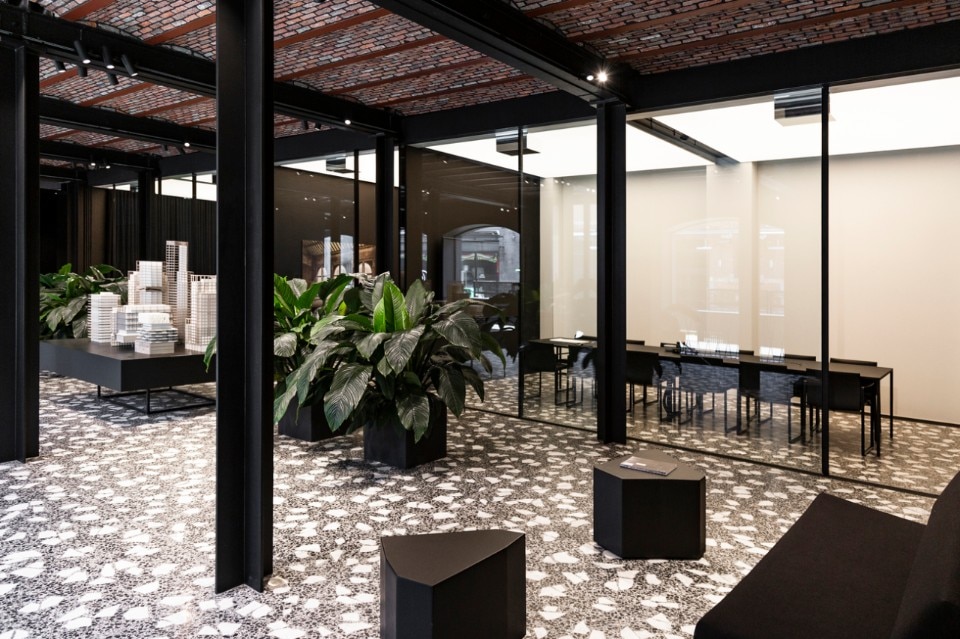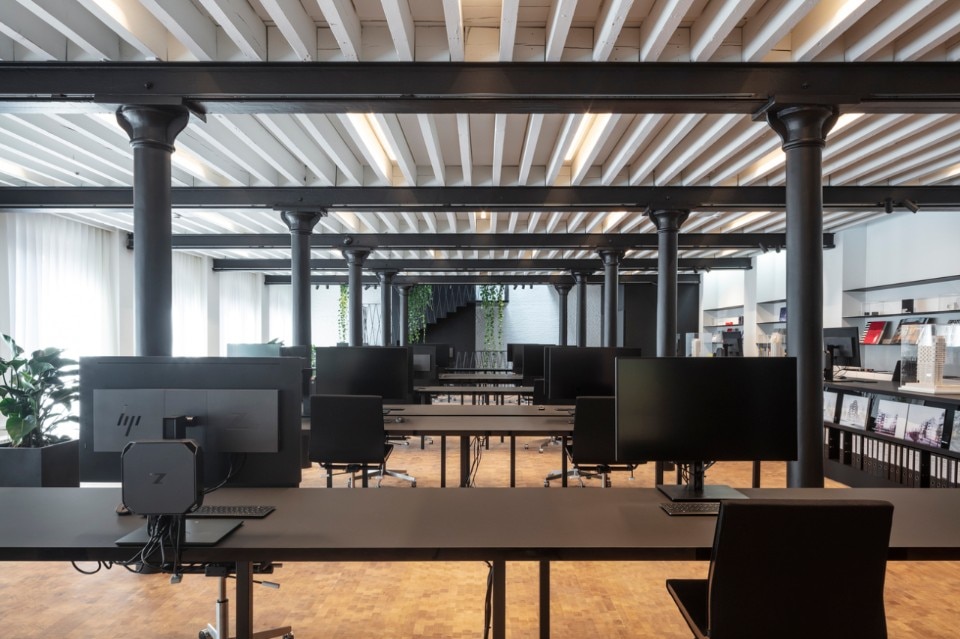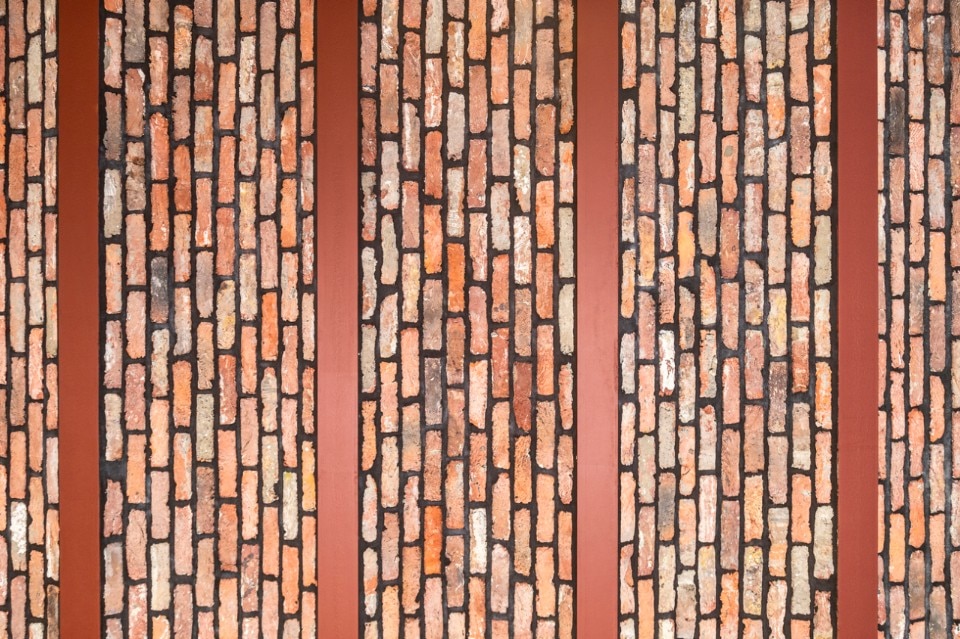The building in question is located along the quays of the Schelda in the former port district of Antwerp. Built in the nineteenth century as a rubber warehouse of the Democratic Republic of Congo, later converted into a car park, restaurant and finally dance floor, it now becomes a work space.
The historic solid brick architecture is completely emptied and reorganised through four levels and a new structure of cruciform pillars and steel beams. Openings, stairs and a balcony all along the street front are introduced without affecting the original essence of the building or distorting its identity.
While in the interior the spatial organisation is on the whole ordinary, with open-plan workspaces and meeting rooms, the strength of the project lies in the material experimentation and attention to detail. For their new headquarters, the architects propose an expressive palette of materials, colours, grains and textures of surfaces capable of enhancing the tactile perception of space.
With a clear architectural unity, four different atmospheres identifies each floor. The top level with a steel truss roof, illuminated by the zenithal light of a skylight, is a diaphanous space with an almost sacred appearance, while the floor below is characterised by cast iron beams and columns painted black and combined with a floor made of oak blocks. On the ground floor, the brick vaulted ceiling is combined with a black and white terrazzo floor, while in the large open space for events in the basement, the same floor finish is combined with brass and mirror stainless steel blades.



































